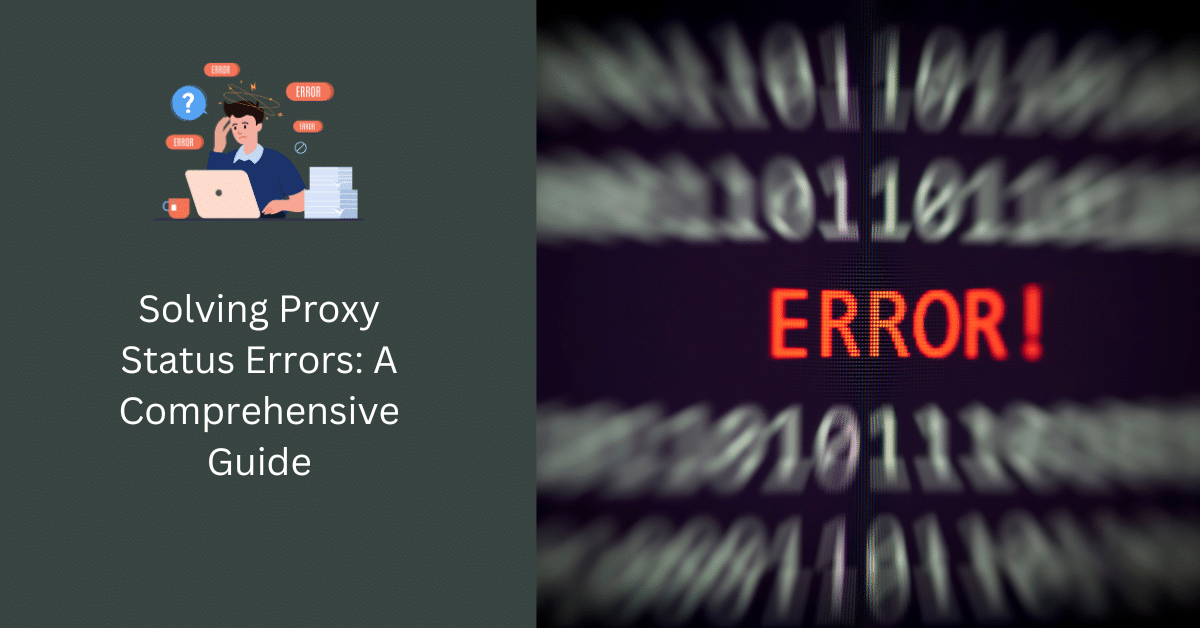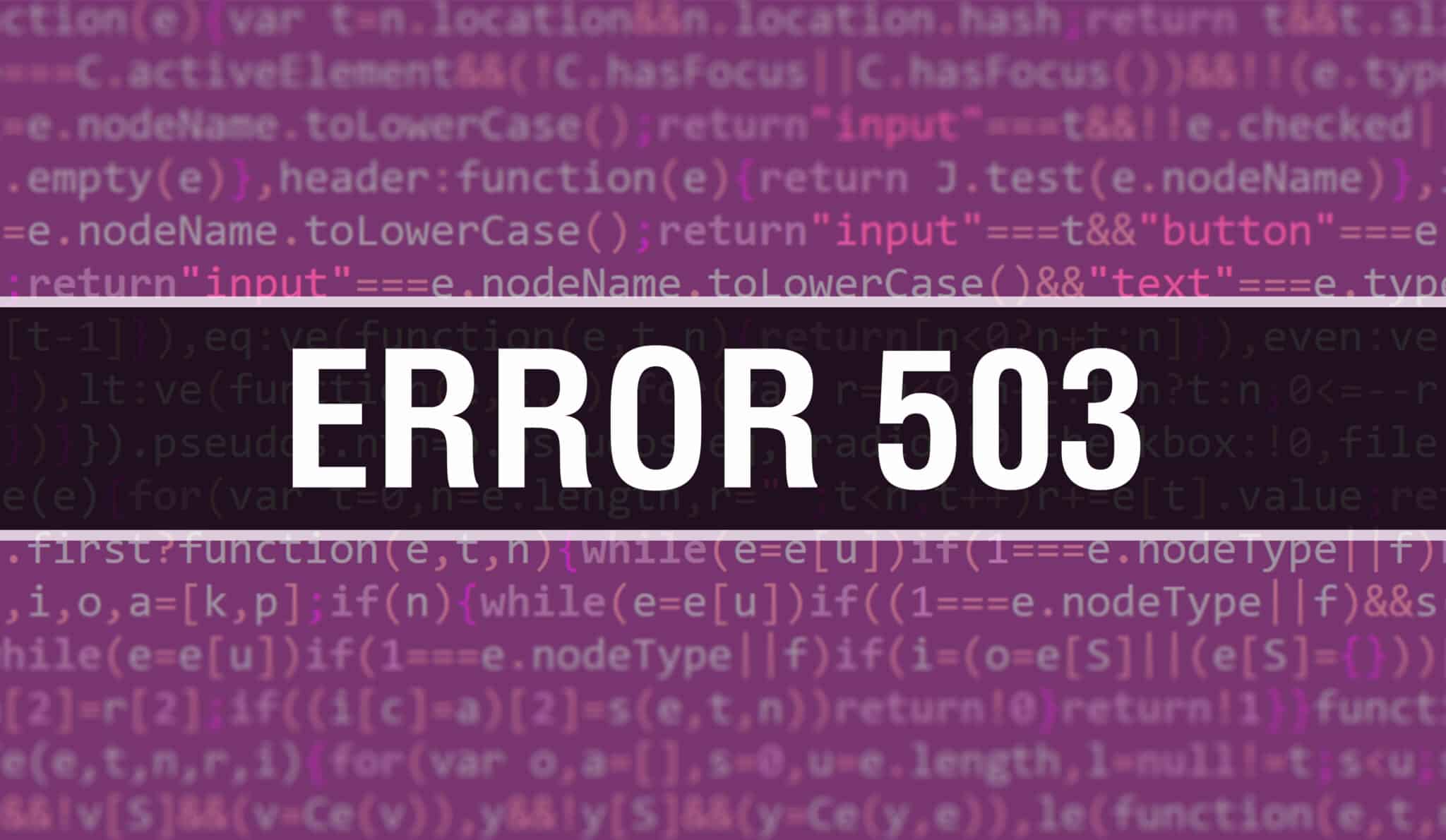
In today’s digital age, the use of proxies has become commonplace, whether for privacy, security, or accessing geo-restricted content. However, like any technology, proxies are not immune to errors. Proxy status errors can be frustrating, but fear not! In this article, we’ll explore the most common proxy status errors and provide practical solutions to resolve them. Let’s dive in and ensure your proxy experience is smooth and error-free.
Proxy status errors are messages that your web browser or application displays when it encounters issues with the proxy server. These errors can vary in nature, from access restrictions to server timeouts. Understanding these errors is the first step towards resolving them effectively.
Common Proxy Status Errors
403 Forbidden Error
The 403 Forbidden error indicates that you don’t have permission to access the requested resource through the proxy. This could be due to IP blocking or improper configuration.
502 Bad Gateway Error
The 502 Bad Gateway error occurs when the proxy server acting as an intermediary receives an invalid response from the upstream server. It’s often a server-side issue.
504 Gateway Timeout Error
A 504 Gateway Timeout error means that the proxy server did not receive a timely response from the upstream server. This can happen due to server overload or connectivity problems.
407 Proxy Authentication Required
When you see the 407 Proxy Authentication Required error, it means the proxy server needs authentication credentials to process your request. Ensure you have the correct login details.
408 Request Timeout Error
The 408 Request Timeout error occurs when the proxy server or the upstream server doesn’t respond within a reasonable time frame. It’s essential to check your internet connection in this case.

The 503 Service Unavailable error signifies that the proxy server, or the service it’s trying to access, is temporarily unavailable. This can be due to server maintenance or overload.
404 Not Found Error

While this error is often associated with regular web browsing, it can also occur when using a proxy. The 404 Not Found error indicates that the requested resource could not be located on the server.
400 Bad Request Error
A 400 Bad Request error typically arises when the proxy server cannot understand or process the client’s request. This could be due to invalid syntax in the request.
Similar to the 503 error, this status code indicates temporary unavailability of the service or server. It’s essential to wait for the service to come back online.
407 Proxy Authentication Timeout Error
This error is a variation of the 407 Proxy Authentication Required error. It occurs when the proxy server waits too long for authentication credentials.
429 Too Many Requests Error
The 429 Too Many Requests error is triggered when the client has exceeded the rate limit for accessing a resource through the proxy. It’s crucial to abide by rate limits set by the server.
505 HTTP Version Not Supported Error
The 505 HTTP Version Not Supported error indicates that the proxy server does not support the HTTP protocol version used in the client’s request. Updating the request or proxy settings may be necessary.
501 Not Implemented Error
The 501 Not Implemented error means that the proxy server does not support the requested method (e.g., GET, POST) used by the client. Check the compatibility of your request with the proxy.
411 Length Required Error
The 411 Length Required error occurs when the client’s request lacks a “Content-Length” header, which is required by the server. Ensure that your request is properly formatted.
413 Payload Too Large Error
If the data being sent in the client’s request is larger than what the server allows, the proxy may return a 413 Payload Too Large error. Consider reducing the size of your request.
Troubleshooting Proxy Errors
Now that we’ve identified common proxy errors let’s explore how to troubleshoot them effectively.
Clearing Browser Cache and Cookies
Often, clearing your browser’s cache and cookies can resolve proxy-related issues. This action ensures you’re loading the latest webpage data.
Checking Proxy Settings
Double-check your proxy settings to ensure they are correctly configured. Incorrect settings can lead to errors.
Testing with a Different Proxy
Switching to a different proxy server can help identify whether the error is specific to one server or a broader issue.
Verifying Firewall Settings
Firewalls can block proxy connections. Make sure your firewall settings allow proxy traffic.
Proxy Authentication Checks
If you’re encountering a 407 Proxy Authentication Required error, confirm your username and password are accurate.
Optimizing Proxy Performance
Besides troubleshooting, optimizing your proxy setup can prevent errors from occurring in the first place.
Choosing the Right Proxy Type
Select a proxy type that suits your specific needs, whether it’s HTTP, HTTPS, or SOCKS. Each has its advantages.
Regularly Updating Proxy Lists
Proxy servers can become unavailable over time. Keep your proxy list up to date to ensure reliable connections.
Monitoring Proxy Speed
Check the speed of your proxy server. Slow proxies can lead to timeouts and other errors.
Using a Reliable Proxy Provider
Choose a reputable proxy provider to ensure stable and error-free proxy usage.
In the world of proxies, encountering errors is inevitable. However, armed with the knowledge of common proxy status errors and their solutions, you can navigate these challenges with ease. Remember to troubleshoot effectively, optimize your proxy setup, and enjoy a seamless browsing experience.





